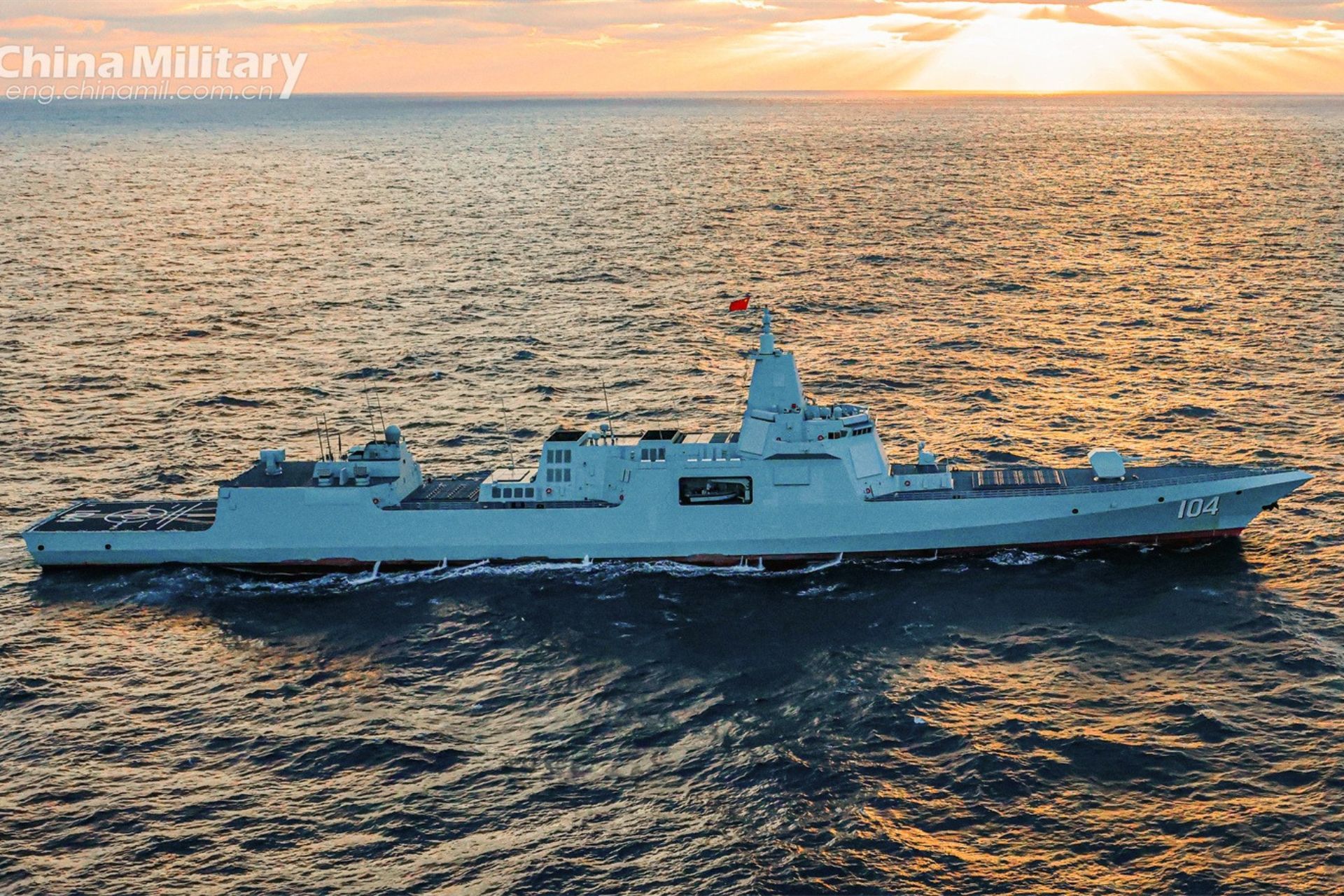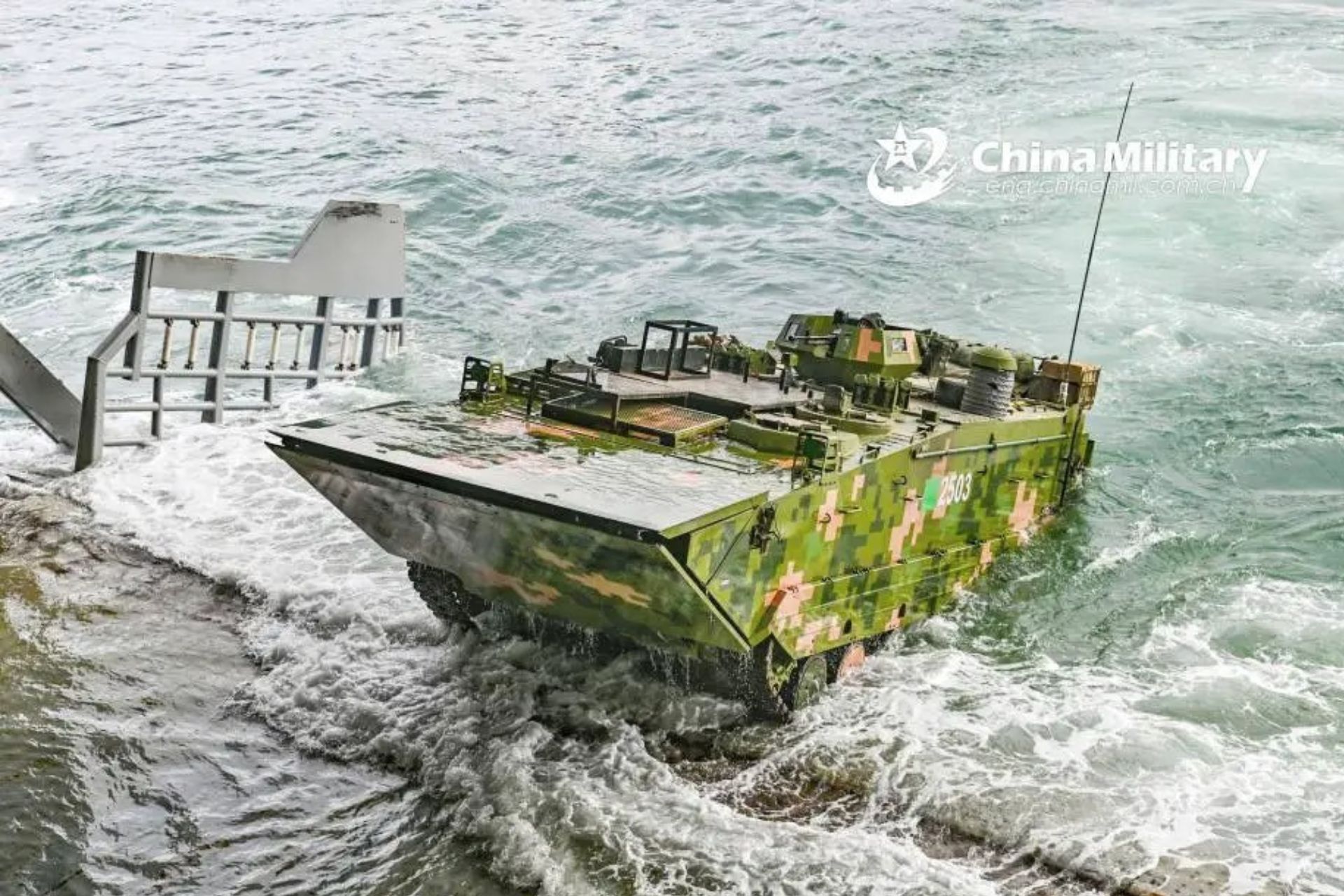Breaking News
Analysis: How China Could Invade or Blockade Taiwan.
Tensions between China and Taiwan continue to escalate, making the possibility of a Chinese military intervention to annex the autonomous island increasingly likely. This rising tension reflects Beijing's determination to assert its sovereignty over Taiwan, which it considers a rebellious province. The regular incursions of Chinese air forces into Taiwan’s airspace, along with massive military exercises conducted near the island, are clear indicators of growing pressure. At the same time, China has developed its defense industry to a level that rivals that of the United States, significantly shifting the military balance in the Indo-Pacific region.
Follow Army Recognition on Google News at this link

Soldiers of the 74th Army Group of the People’s Liberation Army take part in a battle drill in a coastal area of Guangdong province on June 1, 2020 (Picture source: Xinhua Photo)
The People's Liberation Army (PLA) has transformed into a formidable force, equipped with advanced technologies and a diverse array of weaponry capable of executing a large-scale operation against Taiwan. The Chinese Navy, known as the People's Liberation Army Navy (PLAN), could play a central role in such an operation, utilizing several key assets. The Type 003 aircraft carrier, currently under development, would likely be a cornerstone of China's strategy. This next-generation carrier, equipped with electromagnetic catapults, could deploy a wide range of aircraft, providing significant air power projection far from Chinese shores.
In support, China could mobilize its Type 055 destroyers, among the largest and most powerful warships in the world. These destroyers, equipped with vertical launch systems (VLS), are capable of launching cruise missiles, anti-ship missiles, and surface-to-air missiles, thus providing effective air and naval defense coverage. Additionally, Type 054A frigates, designed for escort missions and anti-submarine warfare, could be deployed to secure amphibious convoys or carrier strike groups.
In terms of air power, the PLA could employ its J-20 multirole fighters, also known as "Mighty Dragon." This fifth-generation stealth fighter, designed for air superiority missions, could be crucial in dominating Taiwanese airspace and intercepting Taiwan’s air forces. Complementing this, H-6K bombers, capable of carrying long-range cruise missiles, could be used for strategic strikes against military and infrastructural targets in Taiwan.
On the ground, in the event of an invasion, China could deploy its Type 075 amphibious assault ships, versatile vessels capable of deploying troops, armored vehicles, and even helicopters. These ships would be essential for conducting landings on Taiwan's coasts. Furthermore, the PLA could rely on its Type 15 light tanks, particularly well-suited for operations in the mountainous or coastal terrains found in Taiwan. These vehicles, while lighter than main battle tanks, possess high mobility and the ability to engage fortified targets.
Regarding missile capabilities, China might employ its DF-21D anti-ship ballistic missiles, often referred to as "carrier killers," to target high-value warships, particularly U.S. aircraft carriers that might intervene in support of Taiwan. Similarly, DF-10 cruise missiles, with their long range and precision, could be used for strikes on critical military installations in Taiwan.
Finally, on the cyber front, China could deploy its specialized electronic and cyber warfare units to disrupt Taiwan's communication and command systems, complicating the coordination of Taiwan’s defense efforts.

Type-055 guided-missile destroyer Wuxi attached to a unit with the navy under the PLA Northern Theater Command steams to the designated sea area during a maritime training exercise recently (Picture source: Chinese MoD)
Possible Scenarios for China’s Invasion of Taiwan
Scenario 1: Direct Invasion of Taiwan
The first scenario, and perhaps the most extreme, involves a direct invasion of Taiwan by China. This option would represent Beijing's ultimate expression of its intent to integrate Taiwan by force. Such an operation would require complex coordination of Chinese land, naval, and air forces. Ground forces, supported by massive amphibious landings, would be tasked with seizing control of Taiwan’s major cities and infrastructure. Simultaneously, Chinese air power, including PLA air forces, would be employed to neutralize Taiwan's air defenses and ensure total air superiority.
Naval forces would play a critical role in securing the maritime routes around the island, preventing any external support from reaching Taiwan. The objective would be to isolate the island while conducting targeted strikes on military and civilian infrastructure to break Taiwan's resistance. Although this scenario carries significant risks for Beijing, especially given the potential for U.S. intervention, it represents the most direct form of military coercion to force Taiwan's surrender.
Scenario 2: Limited Maritime Quarantine
A second, less aggressive but still strategic scenario is the implementation of a limited maritime quarantine. In this case, China could announce "enhanced customs inspection rules," requiring all ships entering Taiwan to submit pre-arrival declarations to Chinese authorities. In practice, this would translate into the presence of the Chinese Coast Guard (CCG) around one or more of Taiwan's major ports, with the authority to inspect non-compliant vessels.
This strategy would allow Beijing to test the international and Taiwanese response without immediately triggering open warfare. Widespread international compliance would strengthen China's position, demonstrating its ability to control access to Taiwan without deploying massive military force. If Taiwan or other countries attempted to resist, China could gradually increase the pressure by deploying more forces or extending the quarantine to other parts of the island.

ZBD-05 of PLA 73rd Group Army embarking in landing ship, 9-8-2021 (Picture source: eng.chinamil.com.cn)
Scenario 3: Full Military Blockade
The first scenario, and perhaps the most extreme, involves a direct invasion of Taiwan by China. This option would represent Beijing's ultimate expression of its intent to integrate Taiwan by force. Such an operation would require complex coordination of Chinese land, naval, and air forces. Ground forces, supported by massive amphibious landings, would be tasked with seizing control of Taiwan’s major cities and infrastructure. Simultaneously, Chinese air power, including PLA air forces, would be employed to neutralize Taiwan's air defenses and ensure total air superiority.
Naval forces would play a critical role in securing the maritime routes around the island, preventing any external support from reaching Taiwan. The objective would be to isolate the island while conducting targeted strikes on military and civilian infrastructure to break Taiwan's resistance. Although this scenario carries significant risks for Beijing, especially given the potential for U.S. intervention, it represents the most direct form of military coercion to force Taiwan's surrender.
When and How Might China Act?
The question of when China might implement one of these scenarios remains open. Some analysts believe that Beijing could wait for a favorable geopolitical opportunity, such as a major distraction for the United States on another theater of operations, to launch a decisive action against Taiwan. Others think that China might act sooner to prevent Taiwan from further strengthening its defense capabilities, making an invasion or blockade more difficult.
The involvement of the United States and other regional powers such as Japan or Australia would be crucial in responding to Chinese action against Taiwan. Washington has reaffirmed its commitment to support Taiwan, but the extent of this support would depend on the nature of the Chinese attack. A quarantine or blockade might not provoke an immediate military response, unlike a direct invasion, which could trigger a major conflict in the Indo-Pacific.
In conclusion, China has a range of military options to exert pressure on Taiwan, from direct invasion to total blockade. Each of these strategies presents both advantages and risks for Beijing. However, China’s final decision is likely to be influenced by broader strategic considerations, including the reaction of the United States and the international community. One thing is certain: the situation between China and Taiwan will remain a major geopolitical concern in the coming years.


























